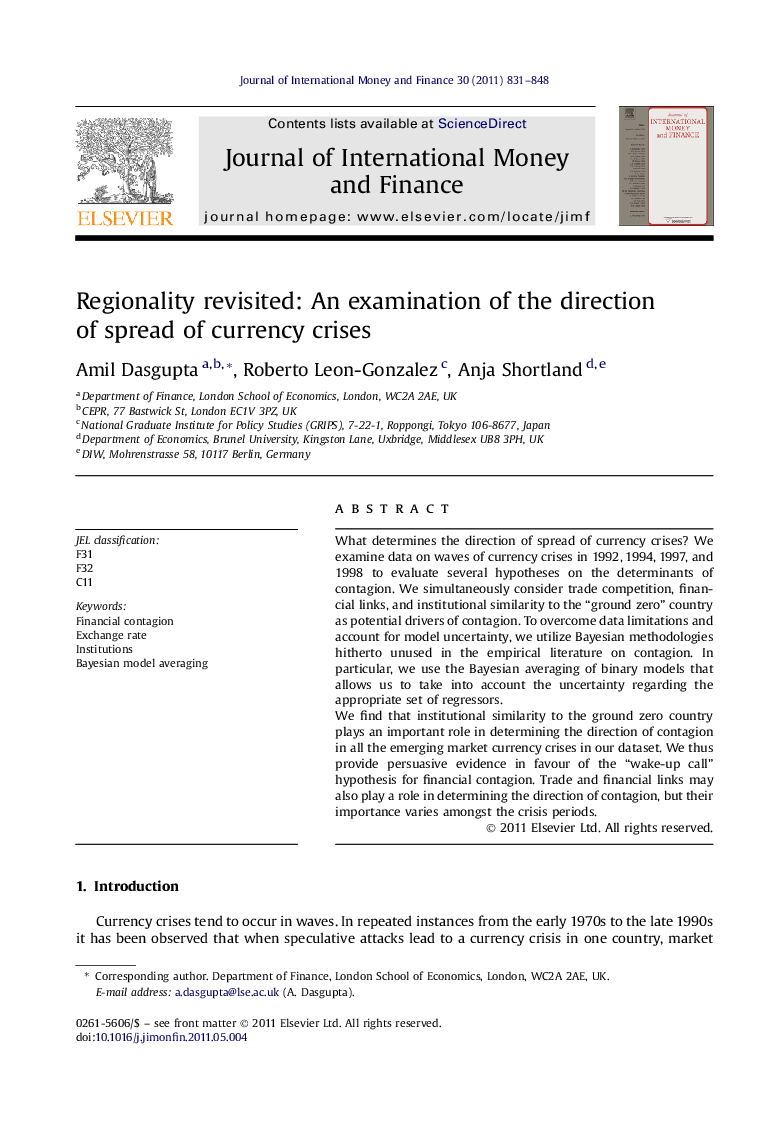| Article ID | Journal | Published Year | Pages | File Type |
|---|---|---|---|---|
| 964175 | Journal of International Money and Finance | 2011 | 18 Pages |
What determines the direction of spread of currency crises? We examine data on waves of currency crises in 1992, 1994, 1997, and 1998 to evaluate several hypotheses on the determinants of contagion. We simultaneously consider trade competition, financial links, and institutional similarity to the “ground zero” country as potential drivers of contagion. To overcome data limitations and account for model uncertainty, we utilize Bayesian methodologies hitherto unused in the empirical literature on contagion. In particular, we use the Bayesian averaging of binary models that allows us to take into account the uncertainty regarding the appropriate set of regressors.We find that institutional similarity to the ground zero country plays an important role in determining the direction of contagion in all the emerging market currency crises in our dataset. We thus provide persuasive evidence in favour of the “wake-up call” hypothesis for financial contagion. Trade and financial links may also play a role in determining the direction of contagion, but their importance varies amongst the crisis periods.
